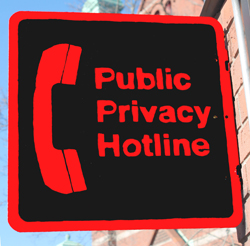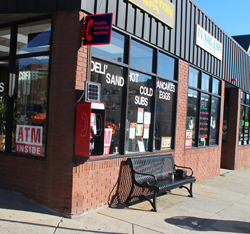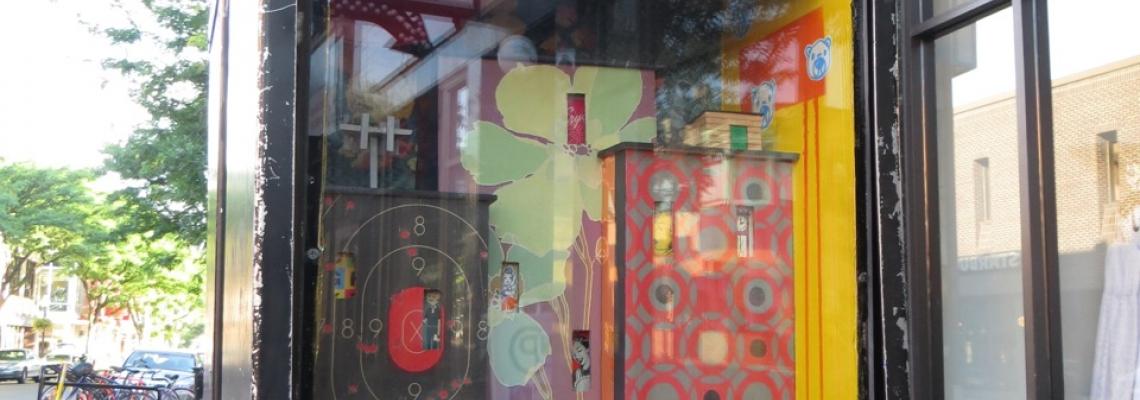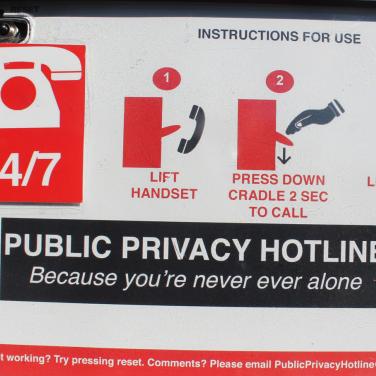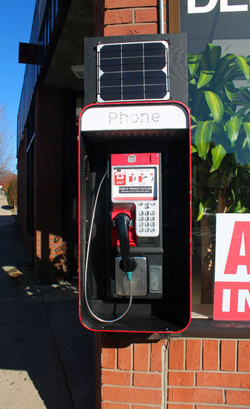 Out of commission but the spirit lives on Dec. 2108
Out of commission but the spirit lives on Dec. 2108
Public Privacy Hotline (2015) informs listeners about government surveillance, reclaiming the telephone as a site of communication and information in the wake of recent revelations about bulk phone metadata collection by the NSA. Mimicking the very surveillance technologies it critiques, the phone uses a motion sensor to “ring” at passersby and begins “dialing” as soon as the receiver is lifted. Where the NSA operates secretly, the speaker here is very direct, even smug, in relaying information about surveillance and how it impacts the listener's daily life.
In using a vintage payphone, the work references a time before cell phones and GPS tracking, when the metadata from a phone call might only reveal one's address and when emergency hotline slogans reminded callers they were “never alone.” The emergency now is just the opposite: we are never ever alone, and this loss of privacy and solitude has immense personal and political consequences.
Seeking to reverse these trends, Public Privacy Hotline empowers listeners by carving out a small public space of privacy. In “calling” this hotline, however, one's choices – and what these choices might reveal to a third party – are severely limited. You cannot call another number, make a call from a different location, or even respond to the speaker. In such a restricted private space, the only freedom is in listening or hanging up.
Emily Greenberg is an artist and writer based in Brooklyn, NY. For more information about her work, please see emilygreenberg.net.
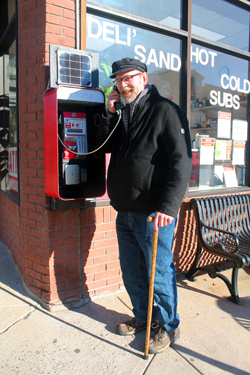 Collaborator: Andrew Kagen (voice actor)
Collaborator: Andrew Kagen (voice actor)
Credits: Thanks to Sam Bobra for programming an earlier version of the project, Michael Greenberg for advising on technical matters, and Susan Berstler and Gregory Jenkins for making this idea a reality.
14” x 26” x 10” (enclosure), 18” x 18” (sign)
Payphone, custom electronics, motion sensor, solar panel, sound, paint
